We’re back with more about our week in Seed School. (In case you missed the first post, click here.) Later in the week, we delved more into the wonders of seeds with dissection, genetics and seed cleaning. So…let’s go to seed school again.
Plants are marvelous things, all very different. We were given the charge to look closely at the male and female parts of flowers in order to understand the process of pollination. Once again, when the hand-outs landed in front of us, old-school panic set in. “Please identify the ovary, stigma, pistil (female parts), and stamen, anthers and filament (male parts) of each flower.”
Okay, this was easy:
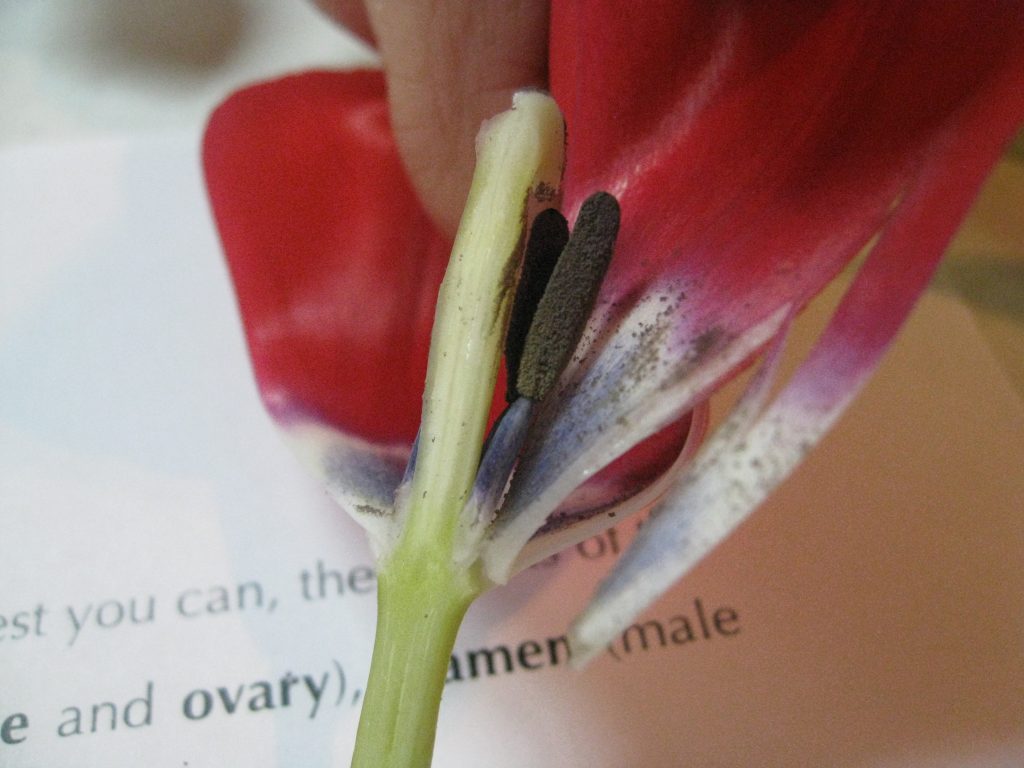
But this one (along with having the flu) left my palms sweating:
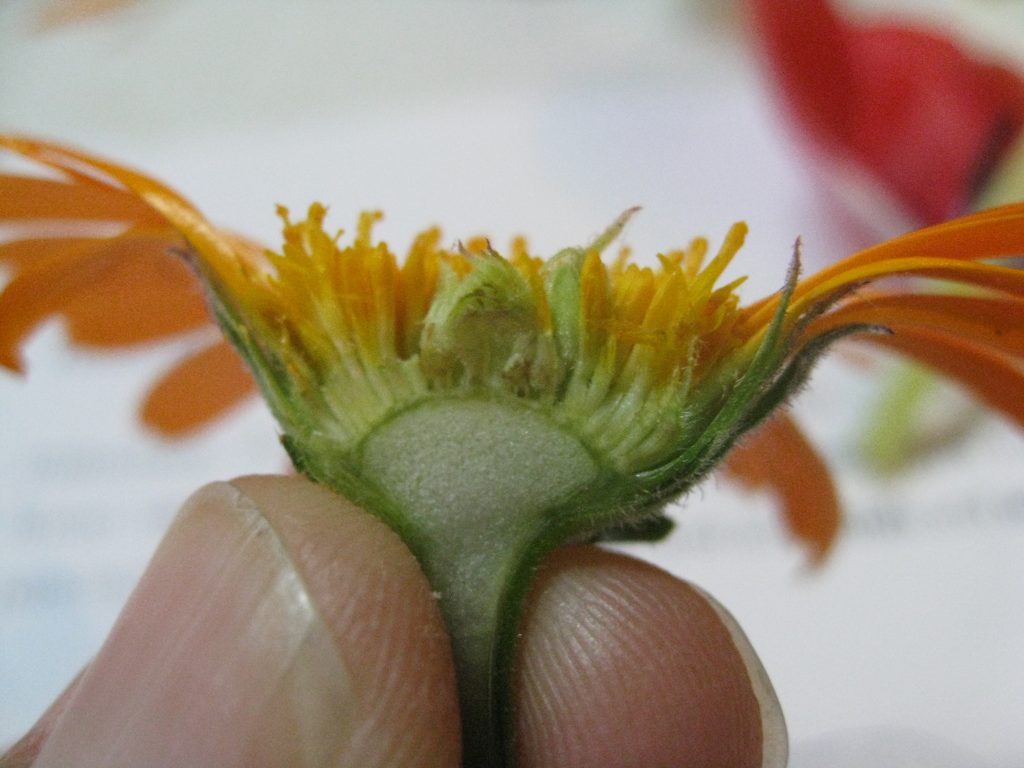
Oh, Nature, you crazy gal.
Knowing how plants have sex is important to seed saving. Some plants have “perfect” flowers, meaning they have male and female parts in the same flower. Those are the easiest to save, like peas and beans, lettuces, peppers and tomatoes. The risk of cross-pollination with another species is much less likely.
“Imperfect” flowers have male and female parts on separate flowers or even separate plants (like A and B types on avocados and blueberries, for instance). Squash, melons and corn have separate male and female flowers and as such, require isolation in order to save the seeds. In other words, it’s much easier for cross pollination to occur with these plants because they are generally pollinated via bees or the wind. Chances are high that pollen from another, different plant will end up on the female flowers.
Seed Cleaning
On a lighter note, we spent an afternoon cleaning seeds using several techniques. Garden nerds brought out their seed cleaning screens, and we pulled cookie sheets from the community room’s kitchen. Some seeds are easy to clean, like corn, which comes off the cob easily and can be winnowed one or two times before the chaff is removed. Other seeds, like quinoa and amaranth, are more challenging. Here’s how it goes:
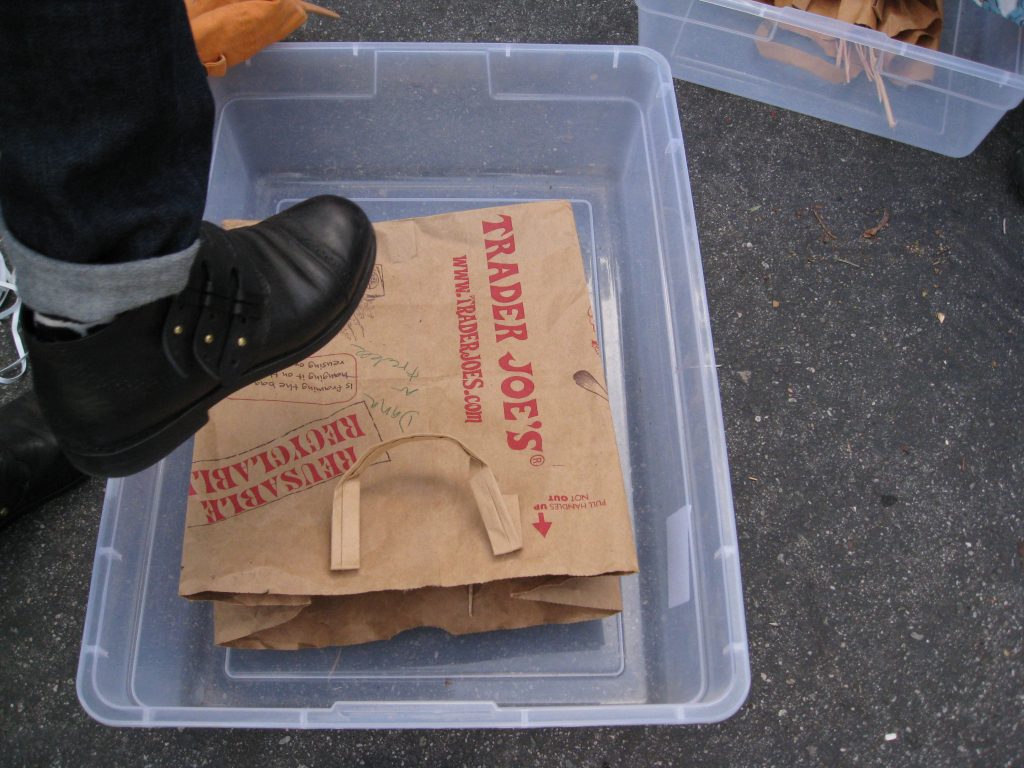
With seeds like mustard or broccoli, seeds are encased in long tapered pods that crack open when crushed. The easiest way to accomplish this is by putting the seed pods in a bag and stepping on them.
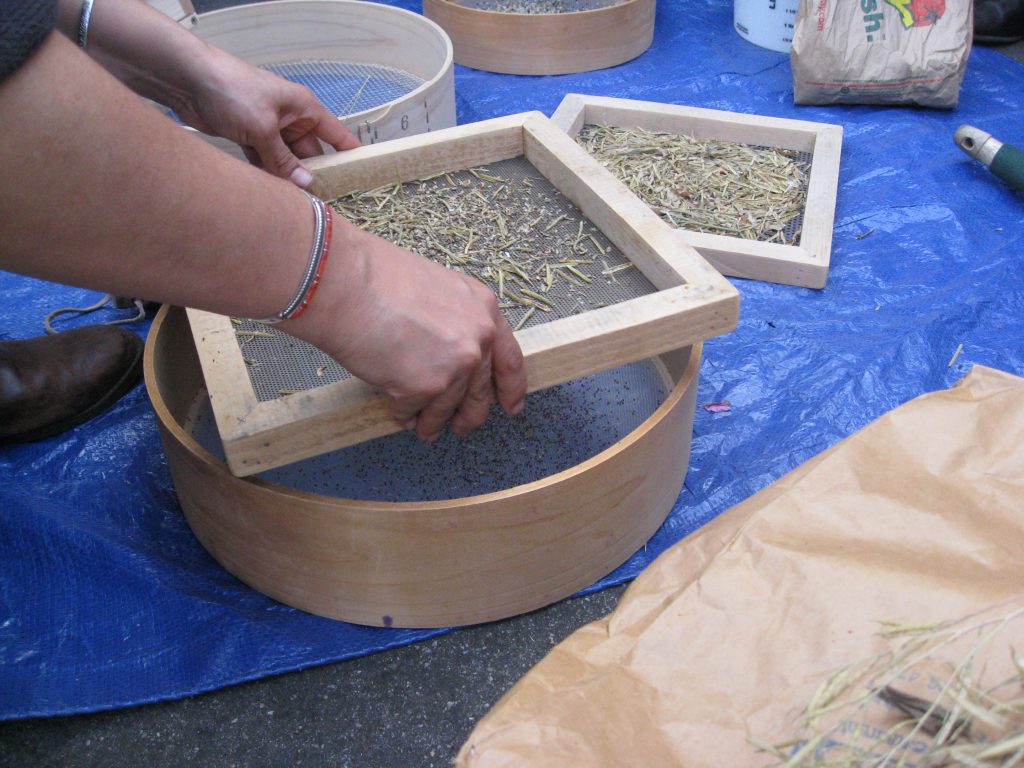
The right screen makes all the difference. You can go all out and get a full set like this one, or you can get just the essentials. Someone brought their hand-made Japanese screens (round, above) and we were drooling over them. WANT!
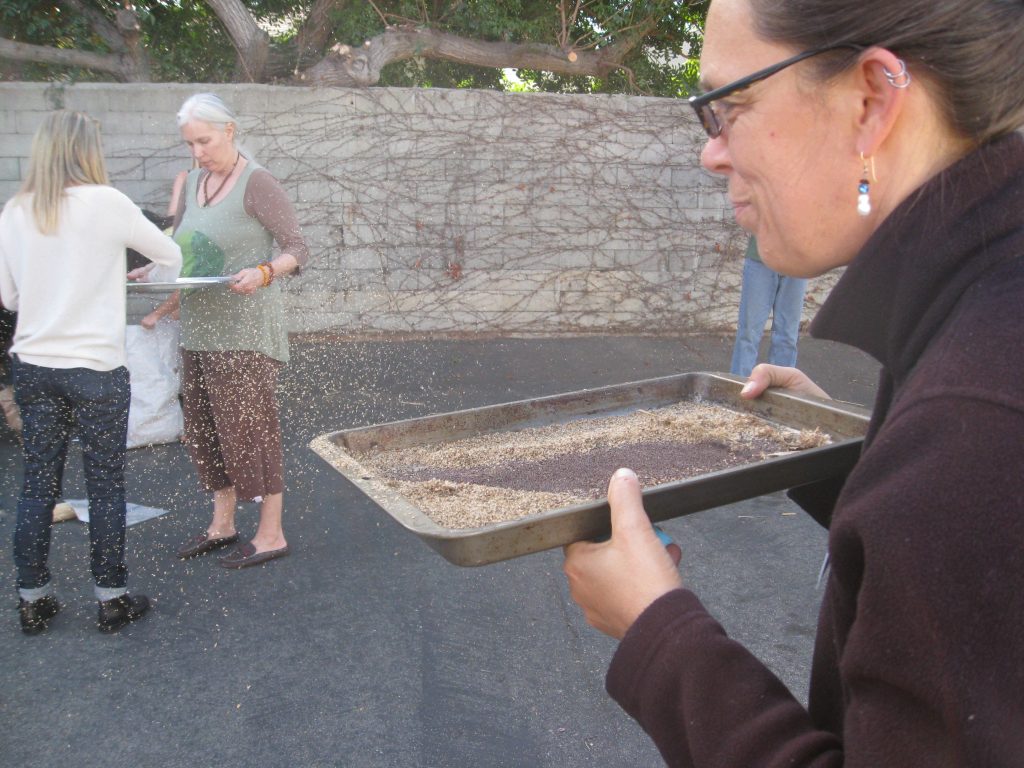
Above, Joanne Poyourow of Environmental Changemakers blows wispy chaff off amaranth seeds. The cookie sheet trick works really well, but eventually we found a small enough screen that took care of the problem in under a minute. It’s all about the screens.
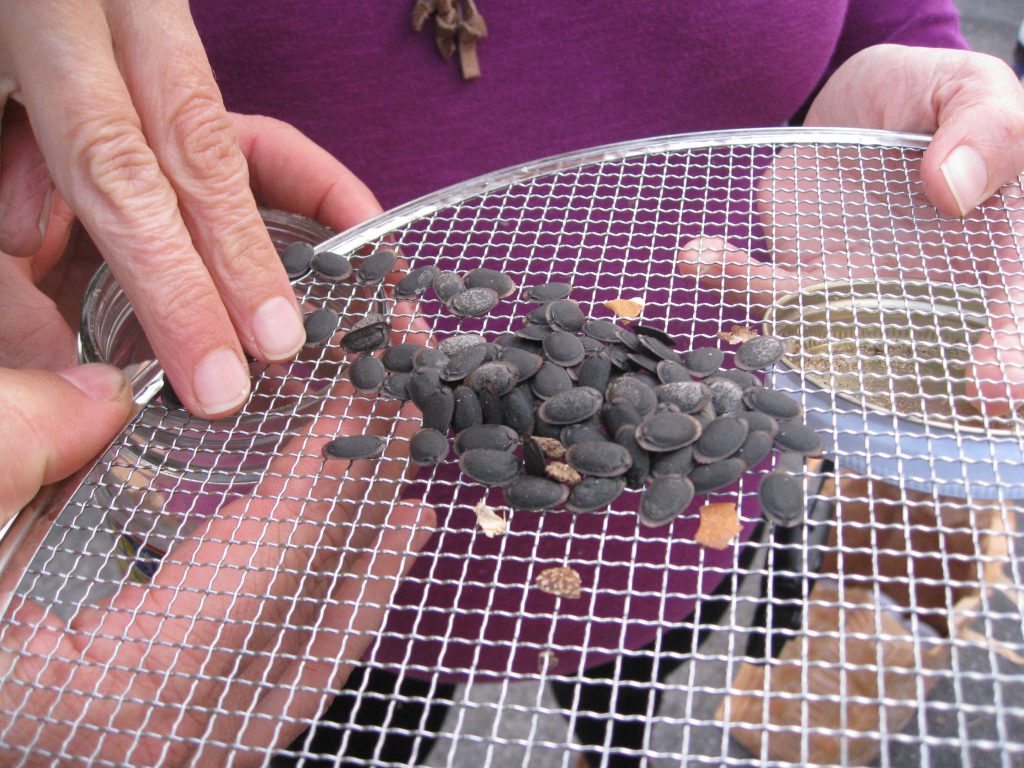
So what happens when you get a roomful of seed savers in the same place as a plethora of exotic seeds? “Who’s got envelopes?!” We all left that day with an assortment of seeds like lemon basil, loofah, Delicata squash, buckwheat and more. Now to find a place to plant them…
Gardenerds, do you have a favorite seed you like to save? Or a family story of saved seed over the generations? Post your comments below. We’d love to hear from you.
Next up…Part 3!

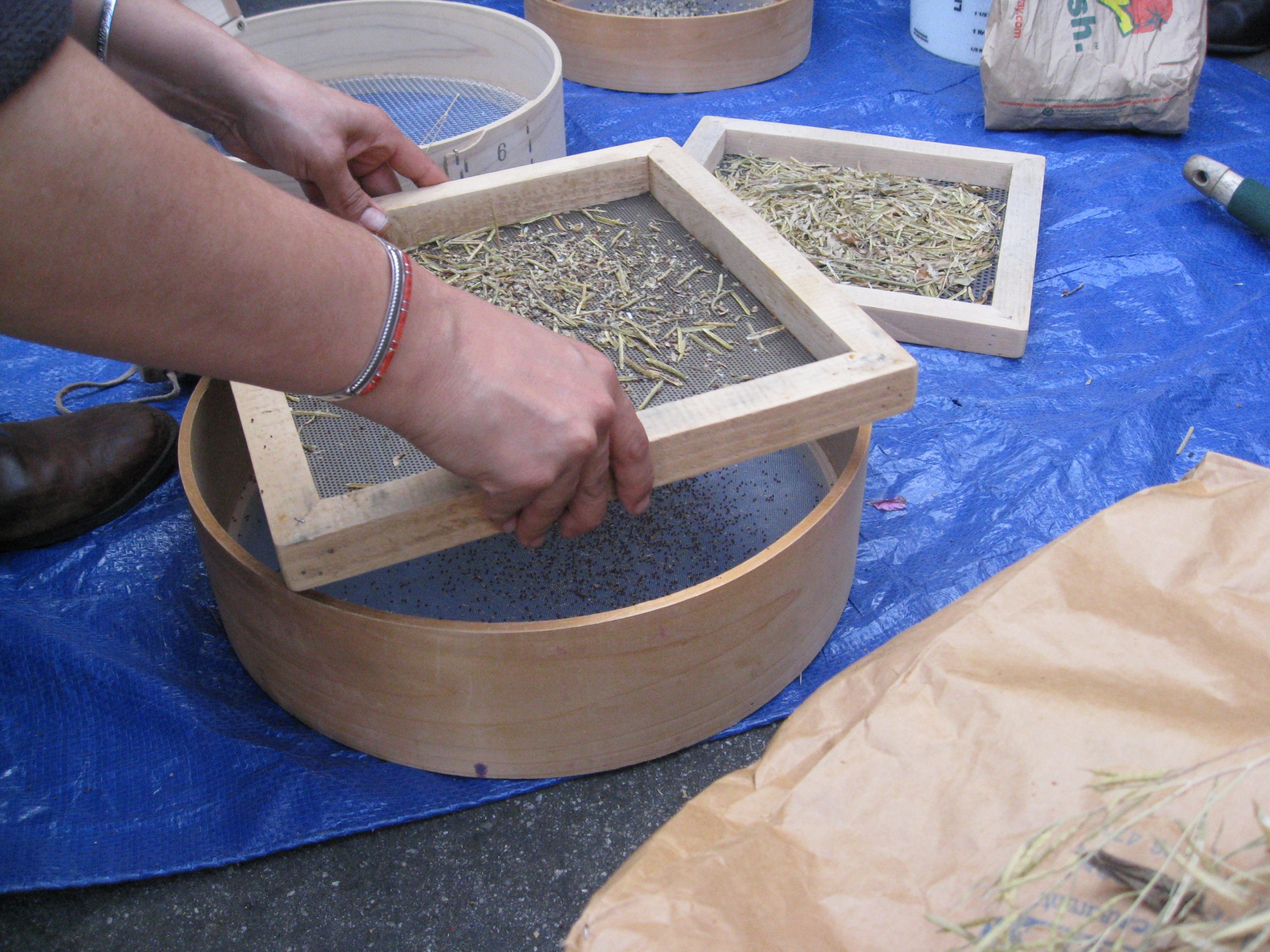
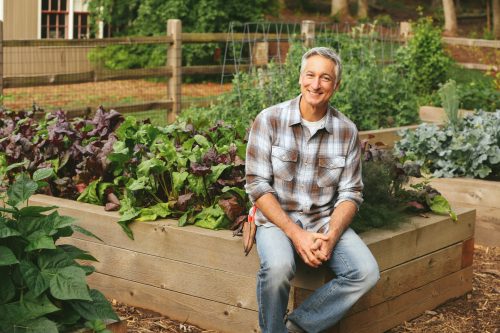

Pingback: Let's Go to Seed School - Part 1 | Gardenerd